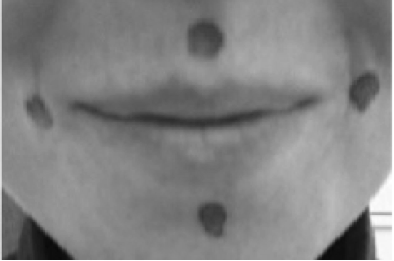Latencies of verbal responses are typically based on the onset of acoustic energy. However, plosive segments (/p/, /t/, /k/, /b/, /d/, and /g/), are initially silent and remain silent until their ending. Thus, acoustic latency conflates true response latency and initial segment duration. To obtain valid measures of response latency, we video the lower part of a participant’s face and measure the movement of the lips and jaw. We track these movements to determine when articulation is initiated. This allows us to literally see what is happening before acoustic onset.
